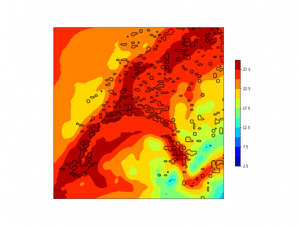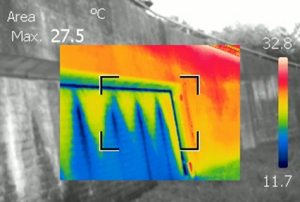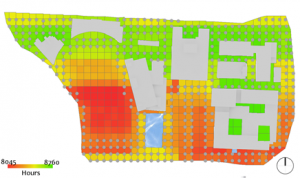Contact: Kavan Javanroodi
Keywords
- Climate change impact on urban areas & climate resilience
- Modeling of building/city energy demand
- Urban thermal comfort and greening design
- Urban climate modelling and measurement
- Automated detection of urban shapes in the built environment
Climate change impact on urban areas & climate resilience
The impact of climate change on urban areas is assessed to design more sustainable cities.
Impact assessment
Several tools and models developed in the group (CIM, CitySim, …) as well as other models such as the Weather, Research and Forecast model are used to evaluate the impact of climate change on urban areas. One example of such studies, was to evaluate the intensity of the urban heat island in Suisse Romande in particular in a future where the urban areas will become more denser.

Climate resilience
In close collaboration with the VP-RHO of EPFL and the Sustainable campus department of EPFL, we have been working on a multidisciplinary research and demonstration project, centred on the question of climate change in urban areas. The EPFL campus is used as a study case to evaluate mitigation and adaptation strategies, that could in the future be applied in different urban setups.
For instance, a quantitative analysis of the impact of a “water wall” on the thermal comfort was conducted. Fig. BBB shows an thermal photographic image taken during the monitoring campaign.

Urban thermal comfort & greening design
When working at the urban scale, it is quite important to understand the thermal behaviour of buildings, their mutual relationship as well as how people live and feel the “space between buildings”. Consequently, the city is considered as a complex energy system, and we work on the energy fluxes within the urban environment, quantifying and optimizing them, in time and space. An important output of this work is related to the outdoor thermal comfort, as well as the greening design, providing the architectural strategies in order to mitigate the urban microclimate and improve citizen’s health and wellbeing.

Urban energy demand & climate – modeling and measurement
In order to design energy efficient cities, the interaction of climate and buildings needs to be better understood. Turbulence, heat islands and greening are just some of the factors that will impact on the energy demand and comfort of a neighbourhood.
The urban modeling software CitySim developed at LESO-PB has already led to a much greater understanding of urban areas. However, to finetune city design, the limits attached to the use of climate data from weather stations and relatively rough climate models are yet to be overcome. This is why we closely study the urban microclimate and endeavor to improve climate models thanks to measurements, among other through the MoTus monitoring tower.